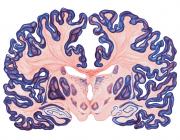A Rhythmic Theory of Attention
Publication Year
2019
Type
Journal Article
Abstract
Recent evidence has demonstrated that environmental sampling is a fundamentally rhythmic process. Both perceptual sensitivity during covert spatial attention and the probability of overt exploratory movements are tethered to theta-band activity (3–8 Hz) in the attention network. The fronto-parietal part of this network is positioned at the nexus of sensory and motor functions, directing two tightly coupled processes related to environmental exploration: preferential routing of sensory input and saccadic eye movements. We propose that intrinsic theta rhythms temporally resolve potential functional conflicts by periodically reweighting functional connections between higher-order brain regions and either sensory or motor regions. This rhythmic reweighting alternately promotes either sampling at a behaviorally relevant location (i.e., sensory functions) or shifting to another location (i.e., motor functions).
Journal
Trends in Cognitive Science

